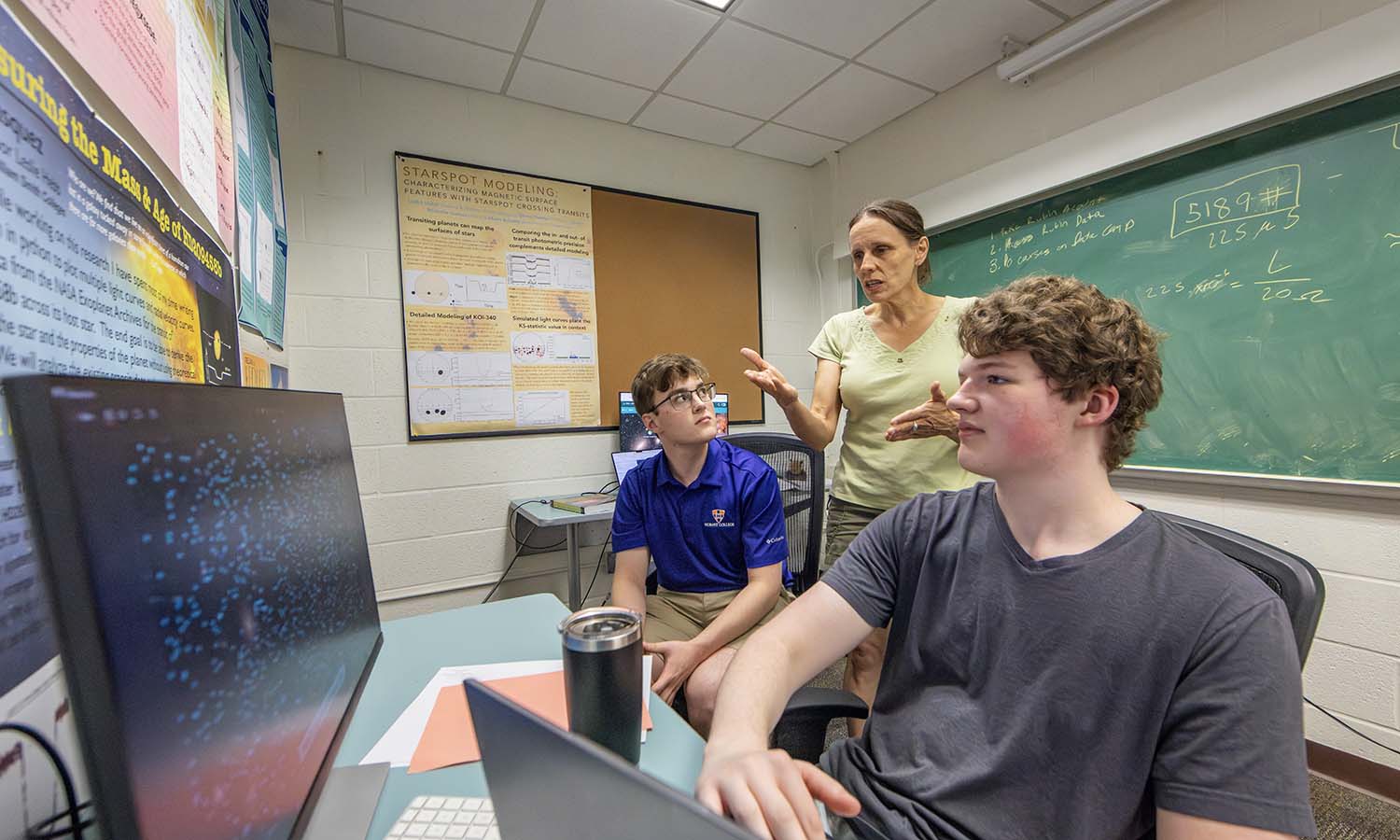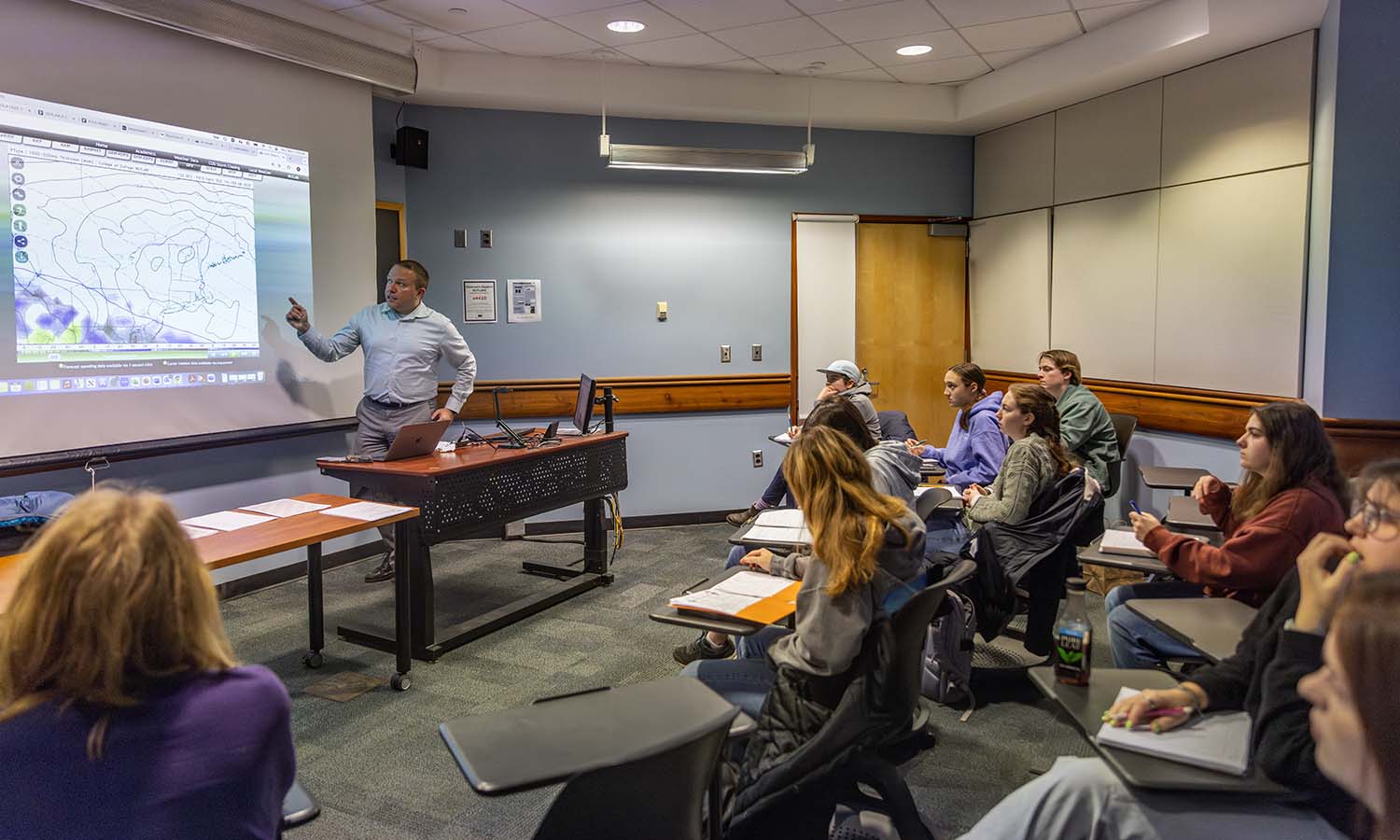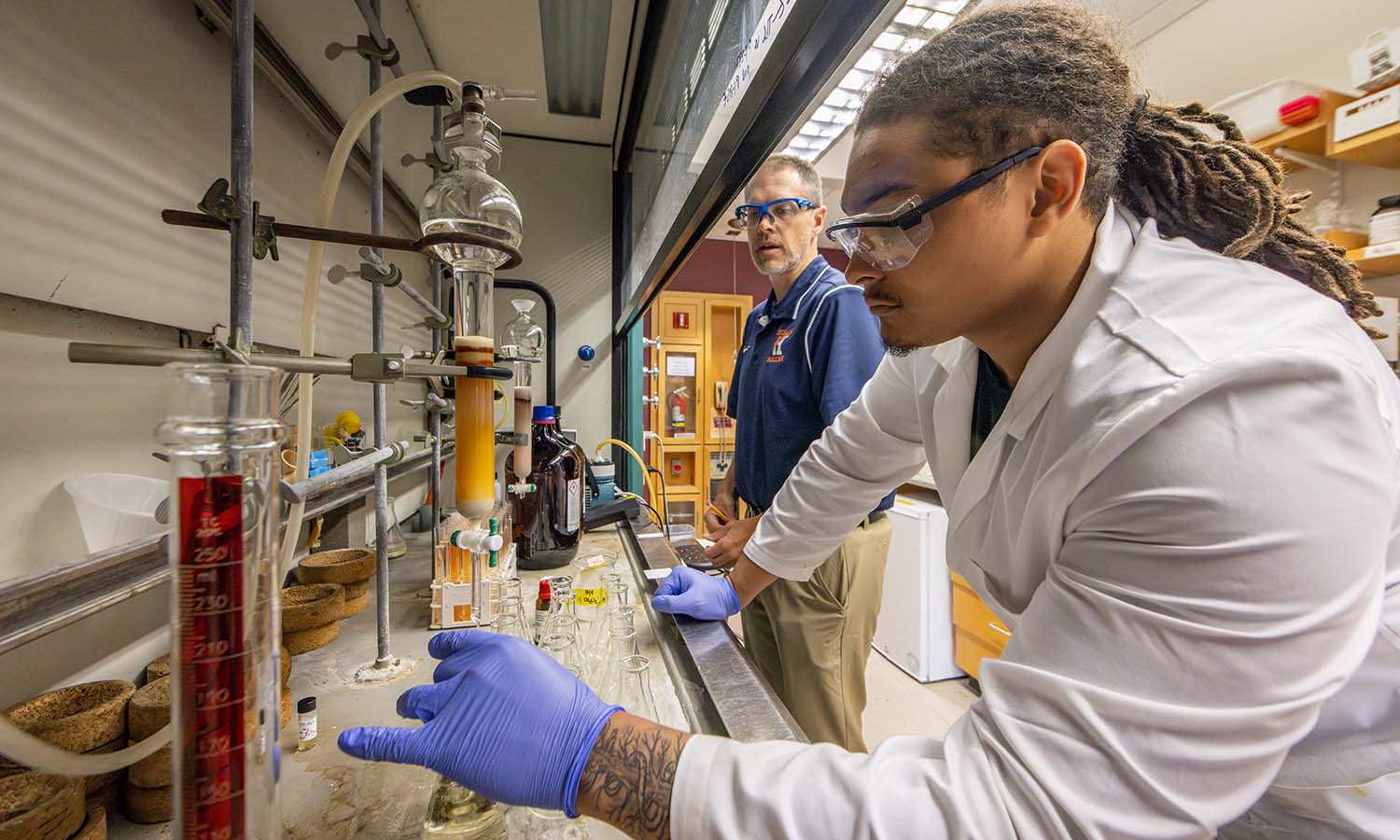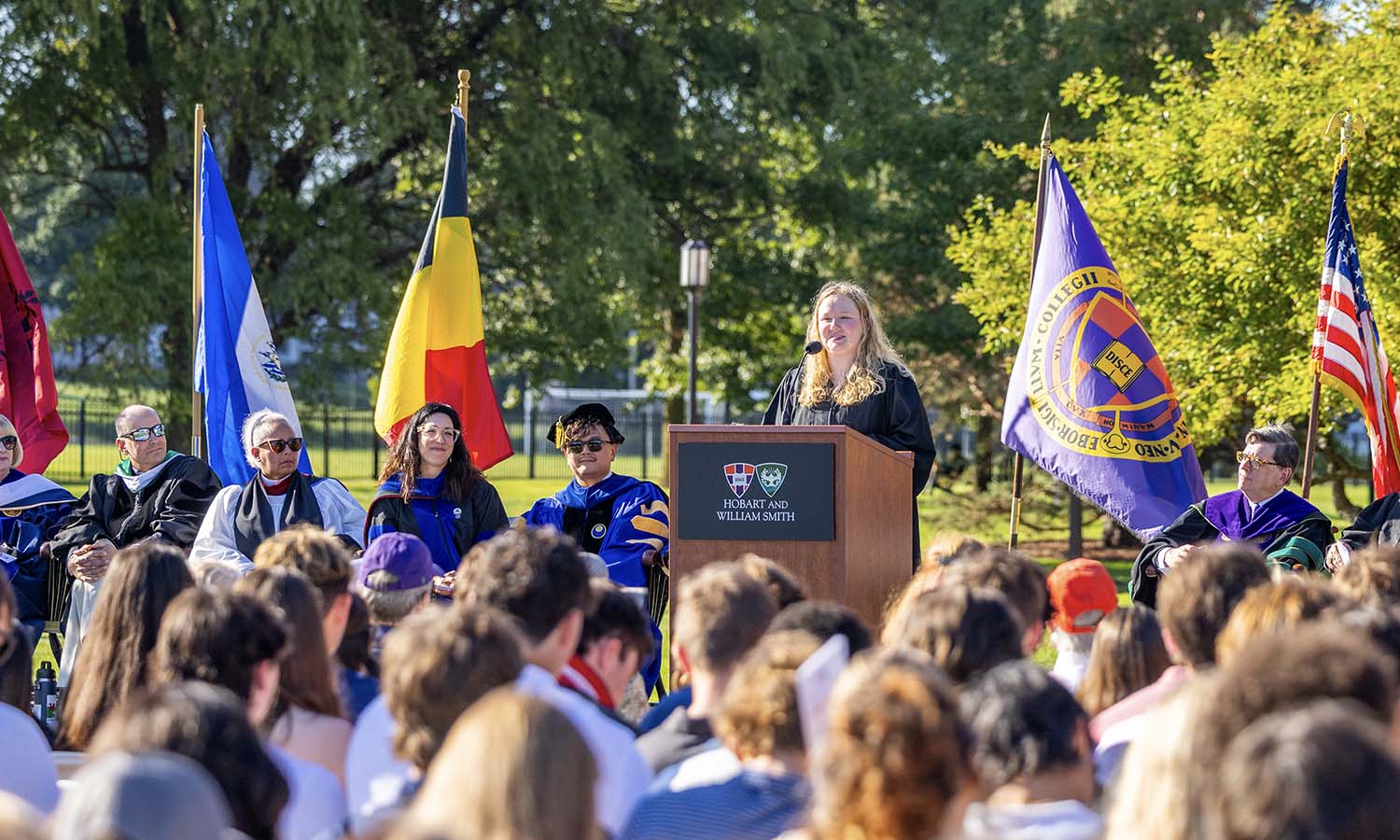
HWS News
18 August 2025 • Research Exploring the Universe with Rubin Observatory Images
With access to new data through a revolutionary telescope and camera, students dive into asteroid detection—merging computer science with cosmic discovery.
In a collaboration with the University of Washington, Hobart and William Smith students are working to identify and characterize new asteroids in the solar system using information from the new Vera C. Rubin Observatory.
Located on a mountain in northern Chile, the Rubin Observatory opened this year and is expected to fundamentally change our understanding of the solar system. Due to its design, camera sensitivity, telescope speed and computing infrastructure, the Rubin Observatory is the first of its kind. With 30-second exposures, the telescope’s camera captures images with a 3.2-billion-pixel sensor--the largest digital camera every constructed.

“Currently there are 1 million known asteroids in the solar system, and this number will increase by 5 million over the next few years with the Rubin Observatory,” explains Jonathan Holmes ’28, who is pursuing a double major in mathematics and computer science.
“From studying asteroids, we will be able to identify near-Earth asteroids and find potentially dangerous objects. We can also map Kuiper Belt Objects (a belt of icy celestial bodies in a region beyond Neptune's orbit), which can give insight into the formation of our solar system,” Holmes adds.
He has been working alongside Physics major Ryan Jackson ’28, who says studying never-before-seen images using extraordinary technology is fascinating. “Outer space has always intrigued me because it is so vast and mysterious, and there is still so much we do not know. This research offers a unique opportunity to explore those unknowns and contribute to new discoveries,” Jackson says.
Jackson and Holmes began their project with Professor of Physics Leslie Hebb July 7—just in time for the Observatory to release its first light images on June 23, 2025. “The new telescope surveys the entire sky visible from Earth’s southern hemisphere every three nights, making a time series of images that show how it changes with time,” Hebb says. “The telescope will collect 20 terabytes of data every night, so our students learn big data skills.”
Holmes and Jackson are using a web-based interactive computing platform (Jupyter Notebooks) that allows them to develop Python programs to analyze the images. The programs they create will help them understand more about the asteroids they observe.
“Since stars and galaxies appear stationary in the night sky, we can compare images taken at different times and detect objects that appear to move or blur. These moving objects are often asteroids,” Jackson says. “Once identified, we can analyze their speed, brightness, and other characteristics to learn more about them.”
Jackson has always wanted to be a physicist or engineer. Research opportunities, especially in physics, however, can be very competitive, he says; they often require prior experience, which he says is hard to get as an undergraduate. “That is why I was so excited to find out that HWS offers summer research programs. I have always been fascinated by space and asteroids, but until now, I had no outlet to explore that interest in depth.”
Top: Using data from the new Vera C. Rubin Observatory in northern Chile, Jonathan Holmes ’28 and Ryan Jackson ’28 are looking for asteroids with Professor of Physics Leslie Hebb.



